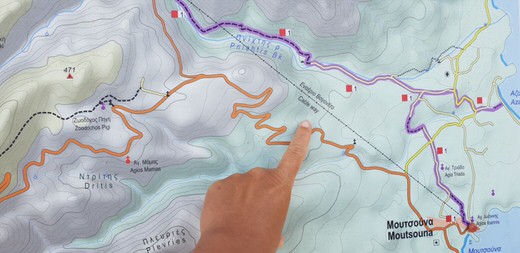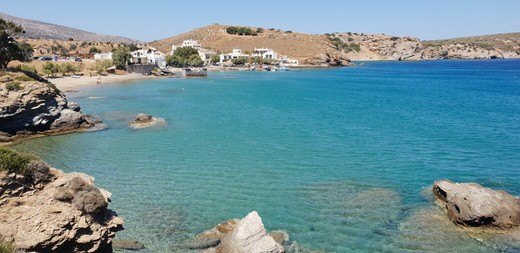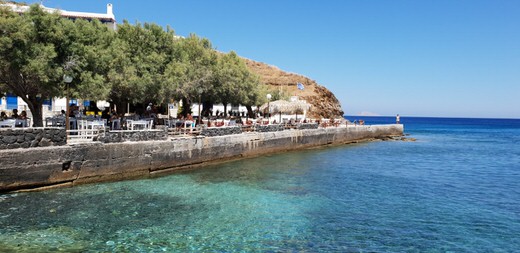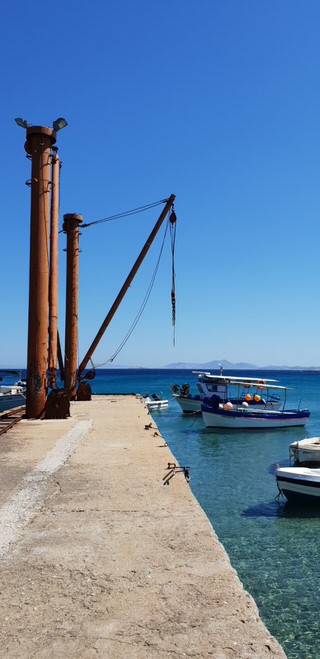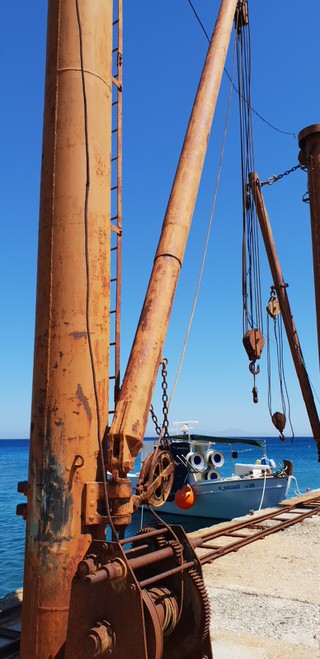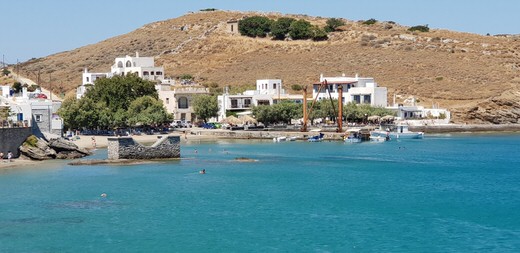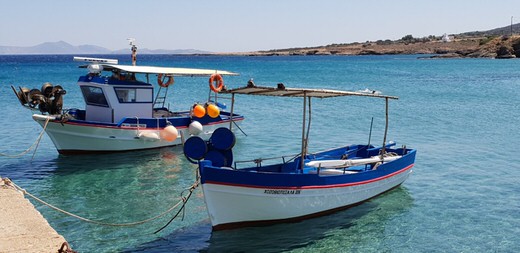The small, fishermen’s village with the important role in Naxos’ economy: that’s how Moutsouna is known. It’s also the seaport of the well-known village of Apeiranthos, in the eastern side of the island.
The quiet village, with the small sandy beach was indeed a very busy hub until 4 decades ago. It was in its small port that the cargoes of emery were transported by an air cable-car net and loaded to ships that would distribute them to Greece’s major ports. Emery is a rare mineral, known since ancient times and used in road manufacturing. Naxos is the only area in Europe, and one of few globally, that has natural emery deposits of high quality. Until the middle of the 20th century, emery exploitation was the main commercial activity for the villages of Apeiranthos, Koronos and Moutsouna, that brought significant wealth to them.
Unfortunately, the production of artificial, low cost emery decreased the demand for the naturally sourced mineral and eventually caused the closure of the mines and the air funicular. Along the road that leads to Moutsouna you can still see the wagons that once carried the cargos, rusted and standing still. Recently a monument was raised in the small port, honoring the mine workers, with a map close to it indicating the funicular route, while the cranes and part of the stone loading platform remain.
But the history of emery is not the only reason to visit Moutsouna. The picturesque bay, with clear, calm waters is ideal for swimming even when winds are strong. The beach is laid with golden sand and the sea is shallow and therefore ideal for families with young children. There are two taverns offering tasty sea food just at the edge of the beach, with picturesque views towards the pier. There, the old, immovable cranes make an interesting contrast with the vivid image of children running and diving from the dock, a classic image of the Greek, carefree summer.


